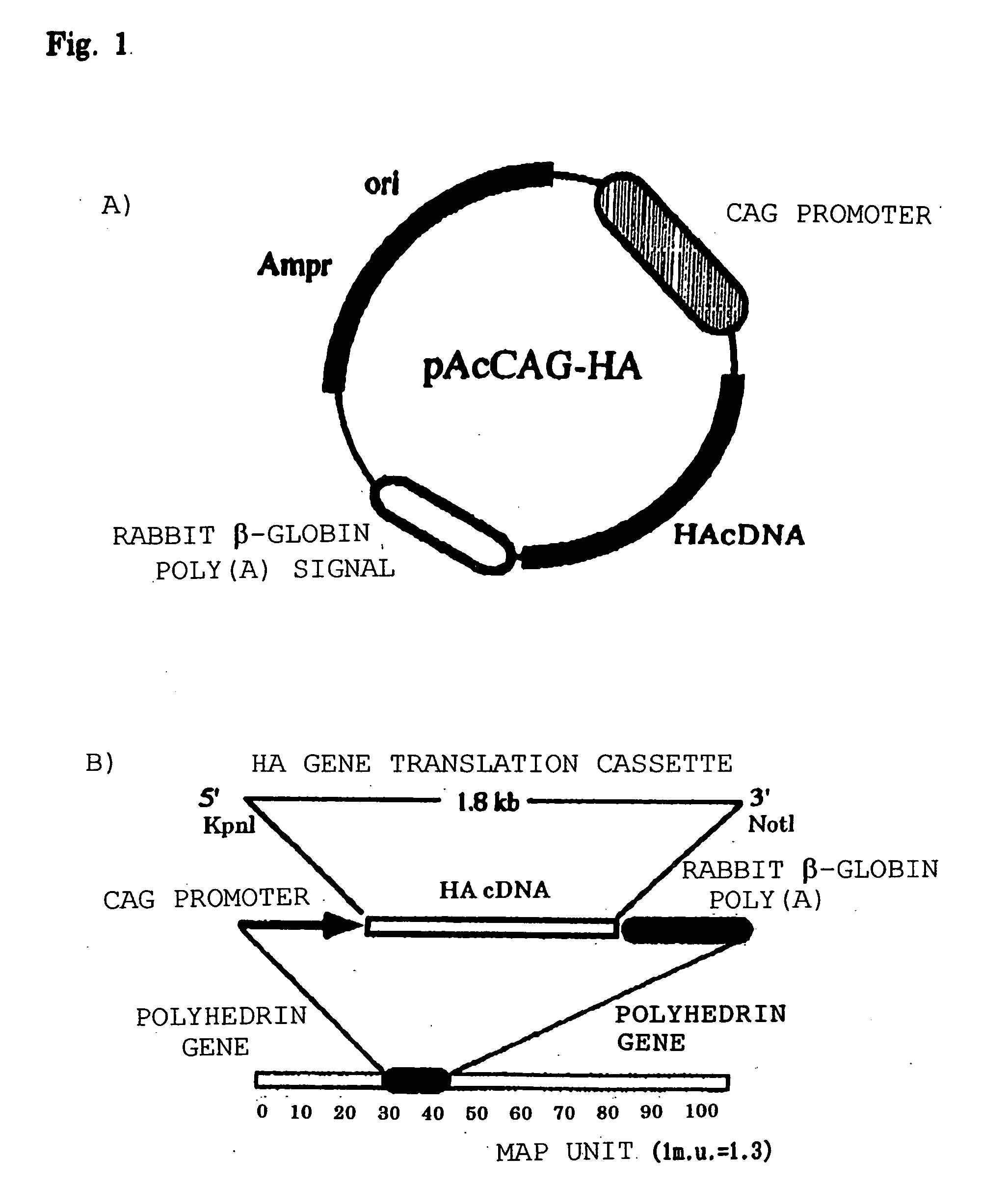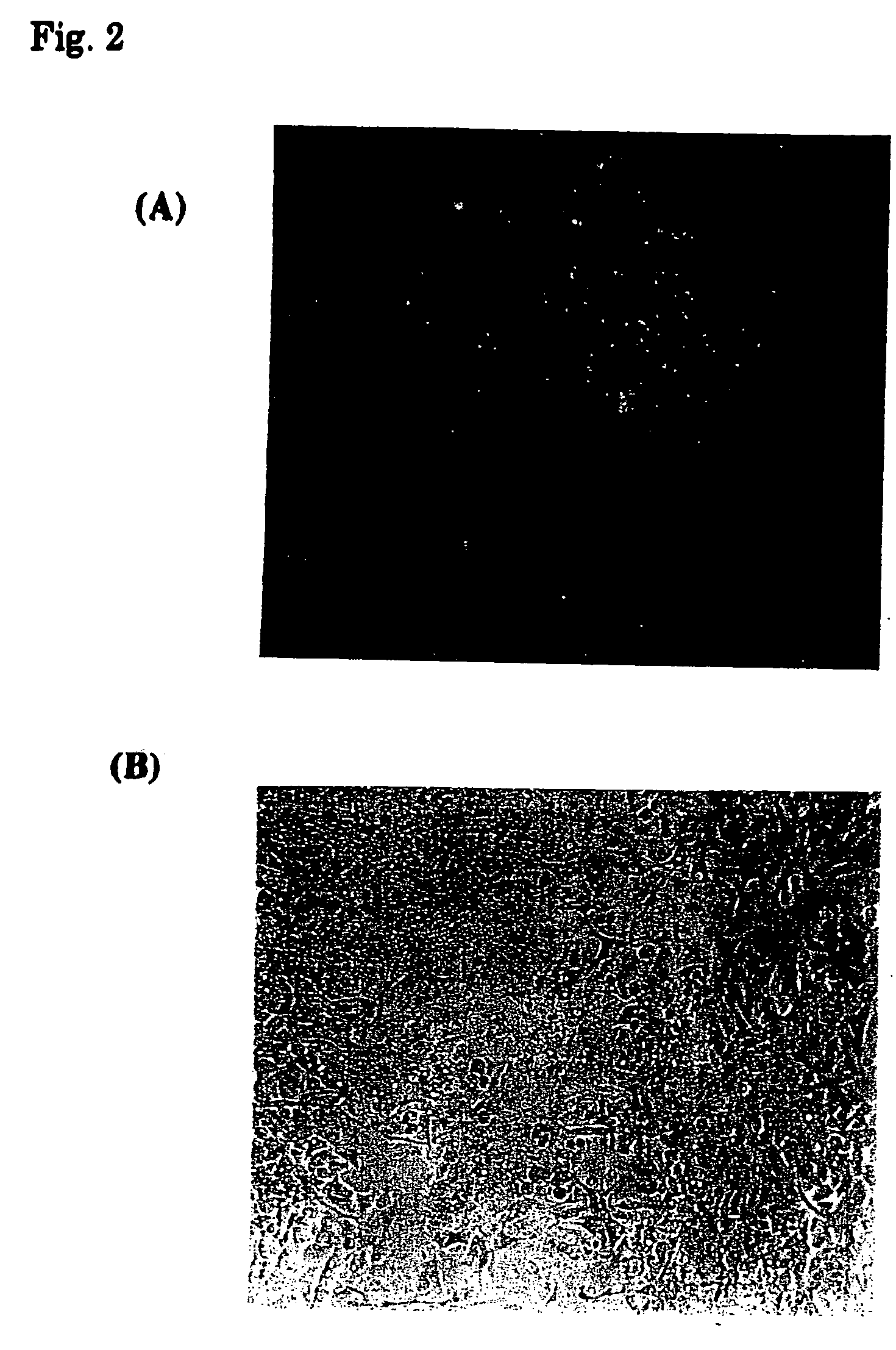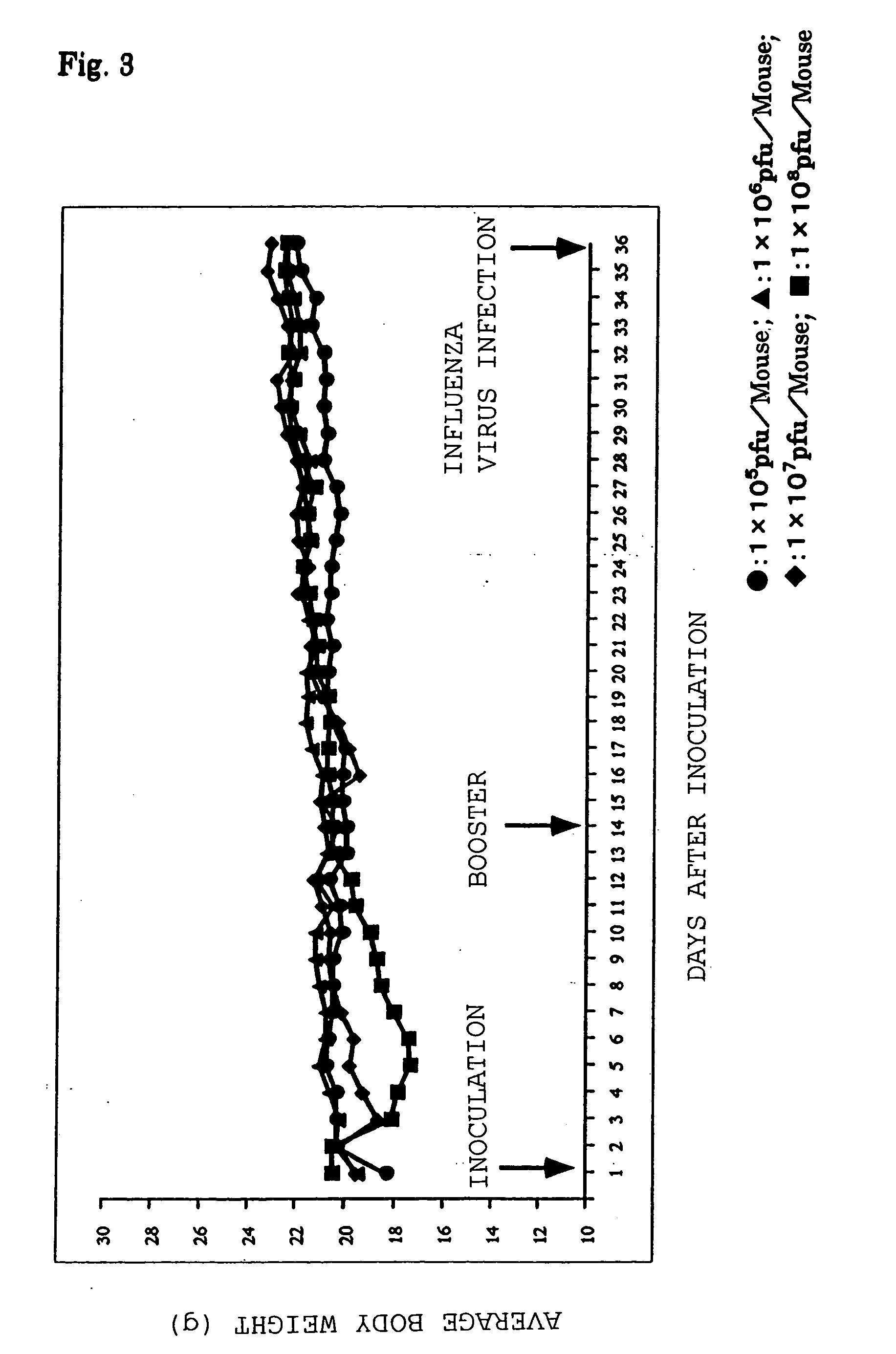Baculovirus vector vaccine
a technology of baculovirus and vector vaccine, which is applied in the field of baculovirus vector vaccine, can solve the problems of unstable factors for reversion to virulence that cannot be completely eliminated, problems with clinical efficacy and safety, and achieve low degree of cell damage, useful vaccine preparation
- Summary
- Abstract
- Description
- Claims
- Application Information
AI Technical Summary
Benefits of technology
Problems solved by technology
Method used
Image
Examples
example 1
Preparation of an HA Antigen-Expressing Recombinant Baculovirus and Evaluation of Gene Expression in Various Mammalian Cell Strains
[0037] Influenza type A virus (A / PR / 8 / 34: H1N1) HA (hemagglutinin) gene (pJZ102 (HA gene insertion vector) obtained-from Dr. S. Nakata, Screening Laboratory, Tansaku Institute, Yamanouchi Pharmaceutical Co., Ltd.) was incorporated into a pAcCAG baculovirus transfer vector having a CAG promoter (Chicken .beta.-actin-derived promoter)(obtained from Dr. Y. Matsuura, National Institute of Infectious Diseases) (FIG. 1A), and an HA antigen-expressing recombinant baculovirus was prepared by a homologous recombination method in sf-9 cells (FIG. 1B). sf-9 cells are of a Noctuidae larva-derived cell line (Spodoptera frugiperda cells) and are generally used for baculovirus replication. The sf-9 cells used were cells contained in the BaculoGold.TM. Starter Package manufactured by Pharmingen. The sf-9 cells were cultured in an incubator at 27.degree. C. using 10% ina...
example 2
Measurement of Anti-HA Antibody Titer in Mice Immunized with an HA Antigen-Expressing Recombinant Baculovirus rBacCAG / HA
[0056] The HA antigen-expressing recombinant baculovirus rBacCAG / HA was administered intraperitoneally (i.p.) to 6 week old female BALB / c mice in an unanesthetized state at doses of 1.times.10.sup.5, 10.sup.6, 10.sup.7, and 10.sup.8 pfu / mouse. After 2 weeks, boosters were administered using the same doses. Blood was collected 1 and 3 weeks after the secondary inoculation, the collected serum samples were diluted 100 times with PBS(-), and the anti-HA antibody titer was measured by the ELISA method.
[0057] Specifically, after the type A influenza virus HA antigen was solidphased in an ELISA 96 well plate at a concentration of 7.5 .mu.g / ml at 4.degree. C. for 18 hours, incubation was conducted at 37.degree. C. for 2 hours after addition of a standard control HA antibody (10, 20, 40, 80, 160, 320 ng / ml) and an immune serum sample. Subsequently, the mixture was reacted ...
example 3
Protective Effect against Influenza Virus Infection in Mice Immunized with HA Antigen-Expressing Recombinant Baculovirus rBacCAG / HA
[0068] The HA antigen-expressing recombinant baculovirus rBacCAG / HA was administered intraperitoneally (i.p.) to 6 week old female BALB / c mice in an unanesthetized state at doses of 1.times.10.sup.7 and 10.sup.8 pfu / mouse, and 2 weeks later boosters were administered using the same doses. Three weeks after the secondary inoculation, the mice were inoculated intranasally with 100LD50 influenza virus (A / PR / 8 / 34:H1N1) in a Nembutal-anesthetized state. After infection with the influenza virus, a morphological inspection and the body weight change of the mice were recorded daily, and the survival rate up to 14 days later was assessed.
[0069] The morphological inspection and the body weight change of the mice were measured daily from the primary inoculation to the influenza virus infection protection test, and the influence on individual mice of the HA antigen-...
PUM
| Property | Measurement | Unit |
|---|---|---|
| concentration | aaaaa | aaaaa |
| concentration | aaaaa | aaaaa |
| concentration | aaaaa | aaaaa |
Abstract
Description
Claims
Application Information
 Login to View More
Login to View More - R&D
- Intellectual Property
- Life Sciences
- Materials
- Tech Scout
- Unparalleled Data Quality
- Higher Quality Content
- 60% Fewer Hallucinations
Browse by: Latest US Patents, China's latest patents, Technical Efficacy Thesaurus, Application Domain, Technology Topic, Popular Technical Reports.
© 2025 PatSnap. All rights reserved.Legal|Privacy policy|Modern Slavery Act Transparency Statement|Sitemap|About US| Contact US: help@patsnap.com



